ATVs, or All-Terrain Vehicles, have become an increasingly important tool for military forces worldwide.
Offering unparalleled mobility on various terrains, these vehicles have proven their worth not only in land operations but also in disaster relief and humanitarian efforts.
In this article, we’ll explore the different roles ATVs can play in the military, from special operations to traditional combat scenarios, and how these highly adaptable vehicles have evolved over the years to meet the demands of modern warfare.
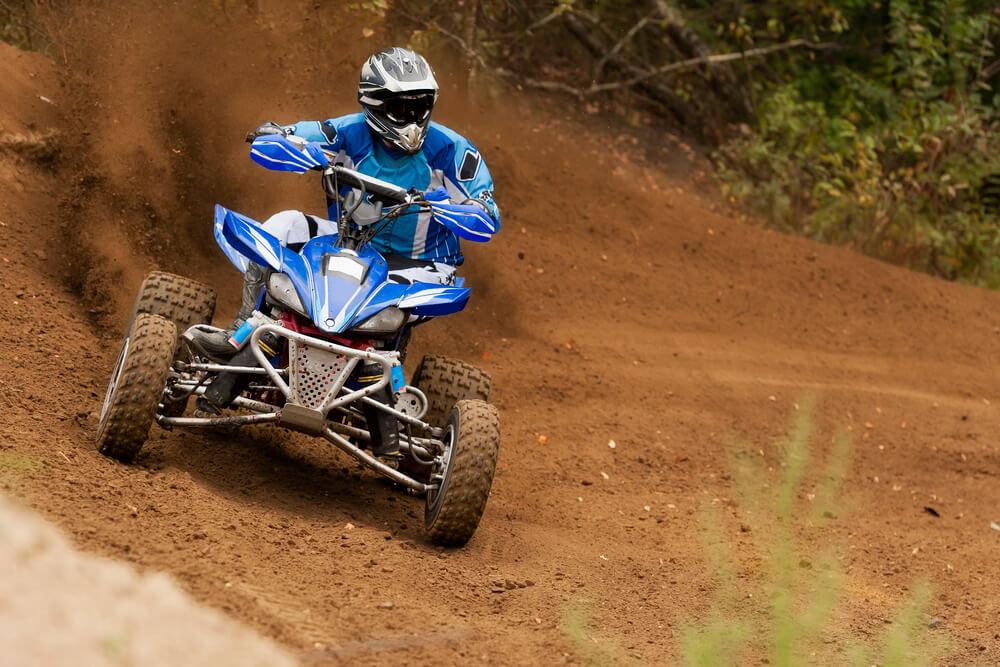
As the requirements of military missions have evolved, so too have the features and capabilities of ATVs. Today’s military-grade models come equipped with advanced technology, improved payload and towing capacities, and even fuel efficiency.
Despite their compact size, ATVs have proved to be a valuable asset in numerous military contexts, providing the means to navigate difficult environments while delivering vital supplies, engaging in reconnaissance, and supporting rapid deployment.
Key Takeaways
- ATVs are widely used in the military for their versatility in land operations and disaster relief.
- Modern ATVs have evolved with advanced technology and improved capabilities to meet military demands.
- The compact size of ATVs provides valuable support for reconnaissance, supply deliveries, and rapid deployments.
The Evolution of ATVs in the Military
As an ATV enthusiast, I have always been fascinated by their development and use in the military.
Let me share with you the evolution of all-terrain vehicles (ATVs) in military applications.
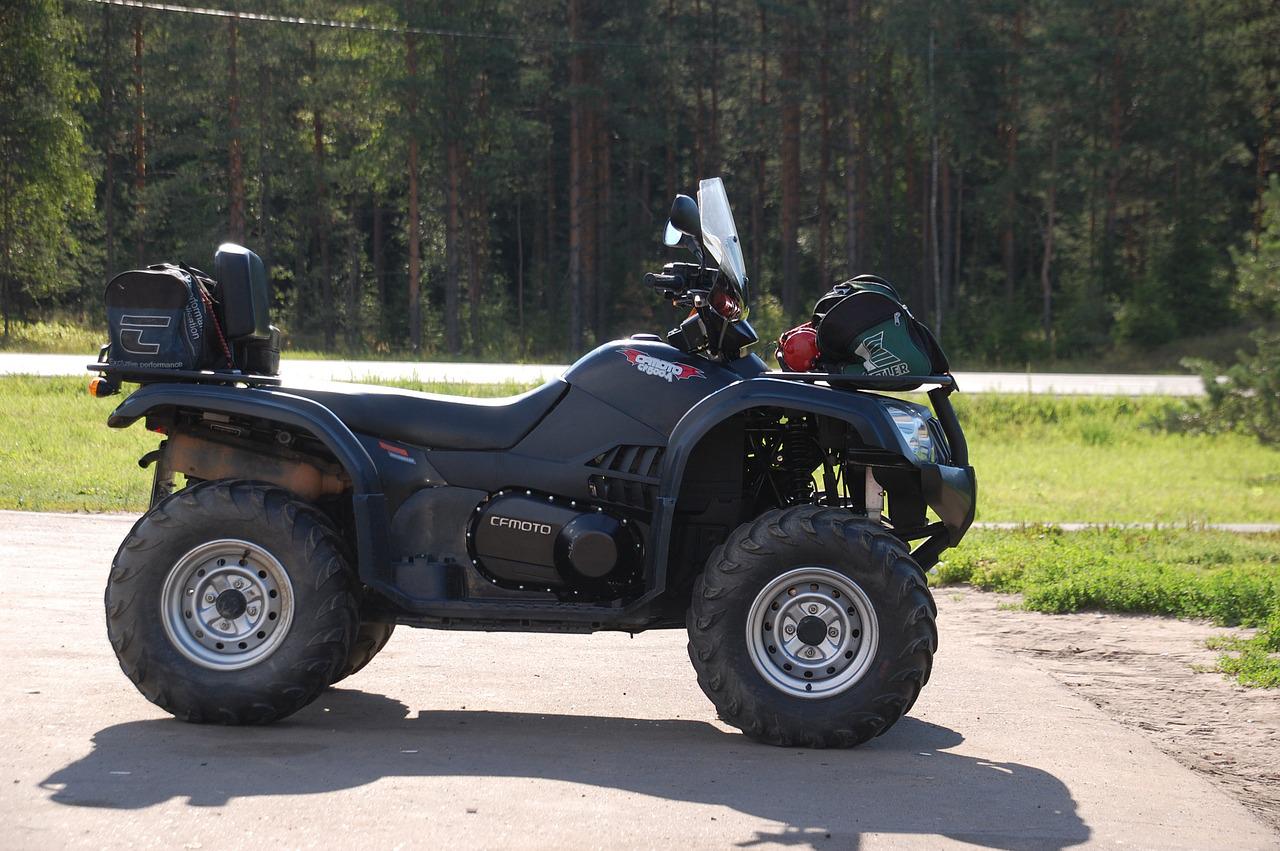
In the early days of ATVs, their purpose was to assist military personnel in navigating difficult terrains. The first all-terrain vehicle was developed during World War II, and it was known as the Kettenkrad.
This small half-tracked motorcycle was able to tackle steep hills, swampy grounds, and snowy landscapes, making it an invaluable asset for the German military.
Over time, the demand for more advanced and specialized ATVs in the military grew. The United States, for example, introduced the M274 Mule in the 1950s, which was a 4×4 vehicle designed for transporting equipment and personnel across rough terrains.
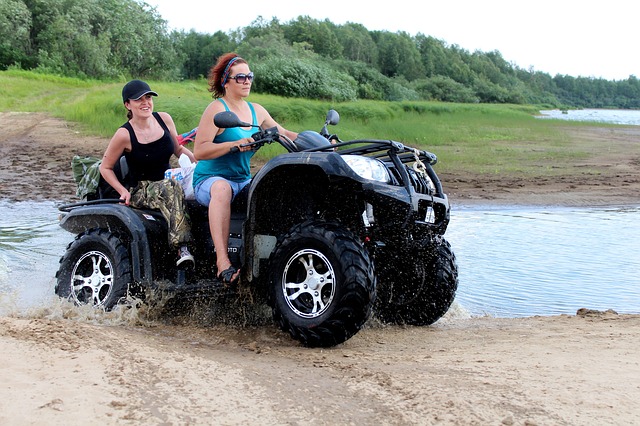
It was later replaced by the M-Gator, a diesel-powered utility vehicle that offered even greater mobility and adaptability.
In recent years, military ATVs have been undergoing significant upgrades to address the unique needs and challenges faced by modern warfare. This includes the development of specialized vehicles like the Polaris MV850, which features advanced suspension and obstacle clearance technology, allowing it to traverse numerous types of terrain.
Another example is the British Army’s Springer, an all-terrain vehicle designed for transporting supplies in rough terrains while also featuring a roll cage for added safety.
Moreover, military ATVs are now being fitted with electronic systems for reconnaissance, communications, and even weapon systems.
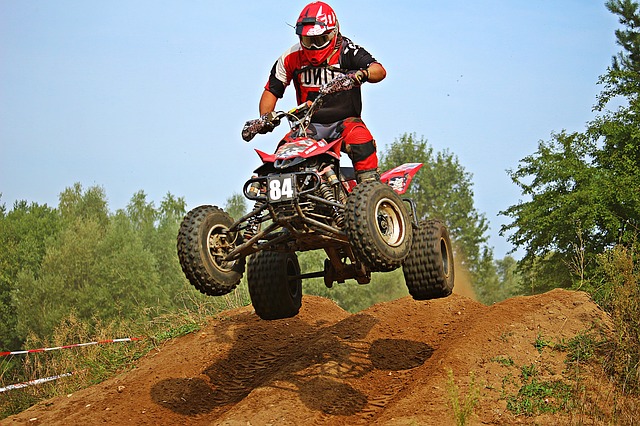
For instance, the Polaris MRZR-D, used by U.S. special operations forces, can be equipped with remote weapon stations and sensors for increased situational awareness and firepower.
As technology continues to advance, I anticipate amazing innovations in military all-terrain vehicles.
Undoubtedly, ATVs will play a crucial role in modern warfare, supporting troops in a wide range of operations and environments.
Specific ATV Models and Their Features
Polaris MV850
I would like to introduce you to the Polaris MV850. It’s an impressive military ATV designed by Polaris, specifically for military usage. The MV850 is equipped with a powerful 850cc, 77hp 4-stroke SOHC twin-cylinder gas engine that delivers exceptional performance.

It also has electronic power steering, which tremendously helps in smoother handling on rough terrains.
An essential feature of this ATV is the black-out drive and infrared (IR) capability. Black-out drive allows the vehicle to operate with minimal visible light coming from its headlights, while the IR capability enables it to be used effectively during night operations with night vision goggles.
These features make it perfect for covert missions and reconnaissance tasks.
Dagor A1
Moving on, let me tell you about the Dagor A1. This is another military-purpose ATV that boasts both versatility and durability. It has been specifically designed to cater to a wide range of missions, showcasing its adaptability and robustness.
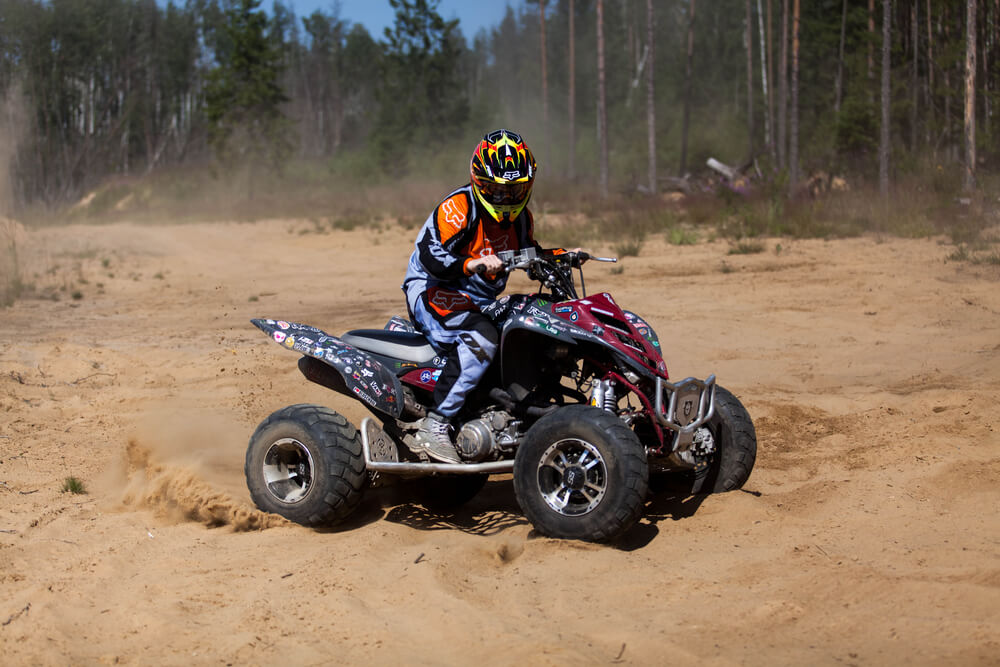
The Dagor A1 offers its users the optimal combination of mobility, payload capacity, and survivability in a compact package.
One amazing aspect of the Dagor A1 is its modular design, which makes it highly customizable depending on mission requirements. The flexibility of this ATV is truly remarkable and simply cannot be overlooked.
Electric ATVs
Finally, I want to mention the increasing importance of electric ATVs in the military domain. Although this may seem like a surprising development, the shift towards electric ATVs makes complete sense when you think about it.
These vehicles are not only eco-friendly but also offer several tactical advantages – they can operate with reduced noise and heat signature, which is crucial for stealth missions.
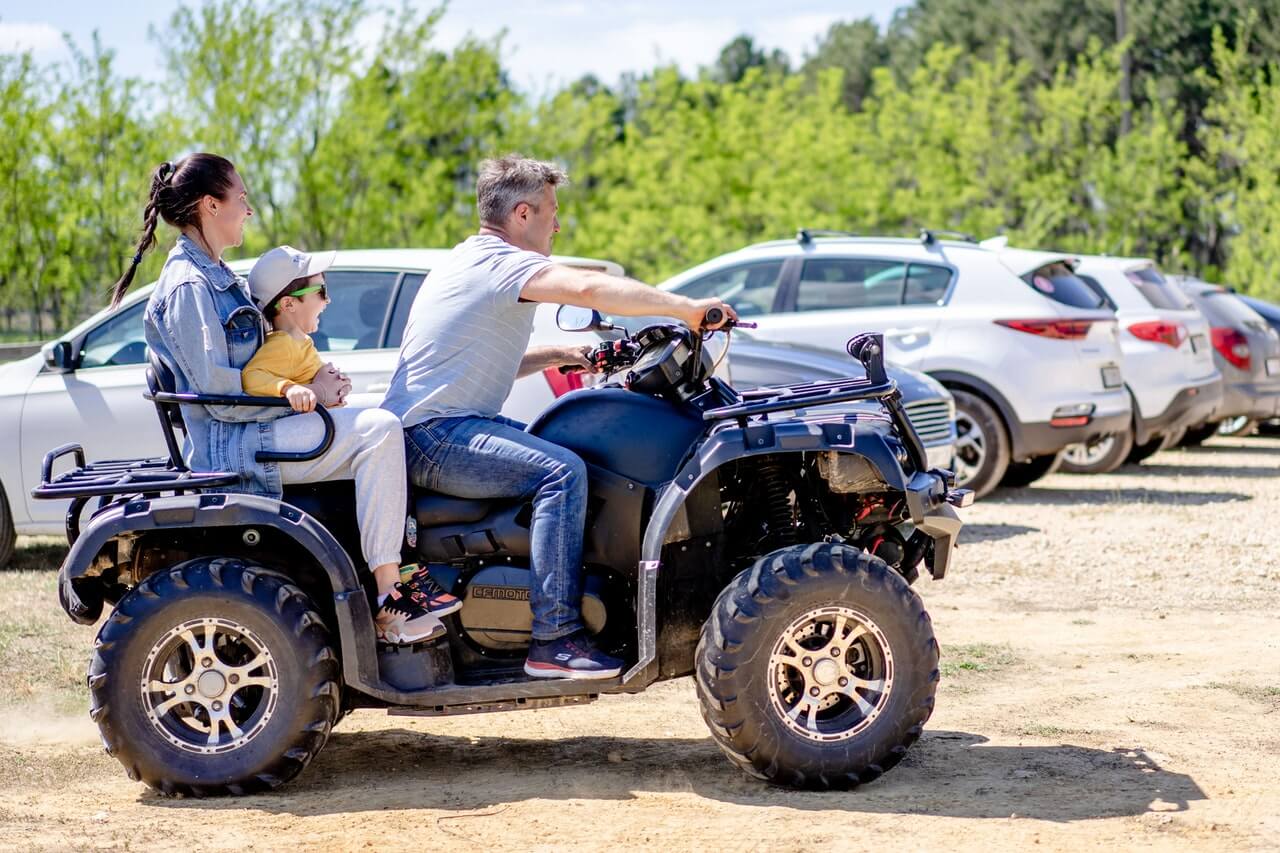
As electric ATVs become more advanced and reliable, I believe we will witness a growing adoption of this technology in military operations, proving the potential of these vehicles to enhance the capabilities of armed forces.
Role of ATVs in Special Operations
When I think about special operations forces, I often consider the critical role that ATVs play in their missions. ATVs have become an essential tool for these elite units, providing mobility, versatility, and stealth.
In this section, I will cover the importance and contributions of ATVs in special operations.
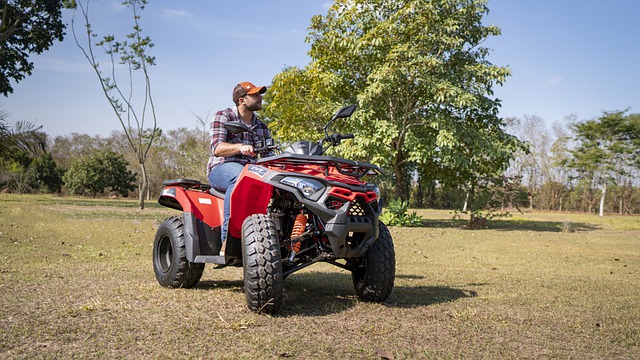
ATVs have come a long way since their introduction in the military. They now feature advanced technological capabilities, such as night vision goggles and other specialized equipment, which make them suitable for special forces operations.
These vehicles enable special forces to quickly traverse difficult terrain, infiltrate hostile territories, and conduct reconnaissance missions. As a result, they play a crucial part in the success of special operations units, including the U.S. Special Operations Command (SOCOM).
One of the unique aspects of SOF ATVs is their ability to operate in various environments. These small and lightweight vehicles can easily navigate through forests, mountains, and deserts, making them a versatile asset for special operations forces.
Their compact size and agility also aid in rapid deployment, transportation via aircraft or other means, and efficient extraction during missions.

In addition to their mobility, ATVs offer many advantages that contribute to the success of special operations missions. For instance, they enable:
- Stealth: ATVs can minimize noise and operate discreetly, allowing special forces to maintain a low profile and avoid detection.
- Reconnaissance: These vehicles are often equipped with advanced surveillance equipment, such antennas or cameras, to gather intelligence and monitor enemy movements.
- Rapid response: The speed and agility of ATVs allow special operations forces to quickly reach objectives, engage with adversaries, or react to evolving situations on the battlefield.
With these capabilities, ATVs have proved to be a valuable asset in a wide range of special operations scenarios. They have been instrumental in the success of numerous missions and continue to evolve alongside the needs of special forces around the world.
As technology advances and new innovations are incorporated into their design, I have no doubt that ATVs will remain a pivotal resource for special operations forces and their vital missions.

ATVs Versus Traditional Military Vehicles
As someone who is passionate about military vehicle innovations, I want to take a closer look at ATVs and how they compare to traditional military vehicles like Humvees. In this section, I’ll focus specifically on the differences between ATVs and Humvees in tactical ground units and other tactical vehicles.
ATVs Vs Humvees
ATVs, or all-terrain vehicles, offer a level of flexibility and versatility that traditional military vehicles sometimes lack. Their smaller size and ability to handle diverse terrain make them ideal for reconnaissance missions, personnel transportation, and even logistics support.
Not only do I find it intriguing, but it’s also essential for tactical ground units to have vehicles that can swiftly navigate rough environments.
On the other hand, we have the iconic Humvee, which has been a staple in the military for decades. Humvees are known for their durability and reliability, providing incredible protection to troops in hazardous situations.
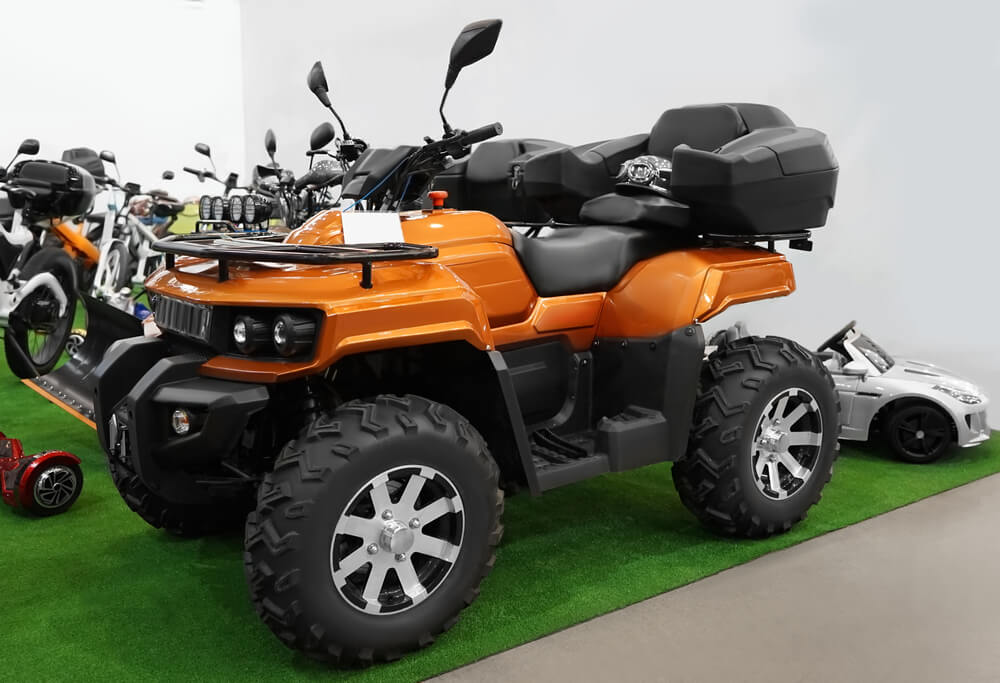
With their armor and robust construction, these tactical vehicles can withstand heavy fire, IEDs, and other threats on the battlefield.
While both ATVs and Humvees are vital in military operations, there are some distinct differences in their capabilities. I’ll list a few key points that I think are relevant:
- Size and maneuverability: ATVs are smaller and lighter, allowing for easier movement through tight spaces and rough terrain. In contrast, Humvees are larger and heavier, making them less agile but more resilient.
- Off-road capabilities: ATVs excel in off-road conditions, whereas Humvees may struggle in some instances due to their size and weight.
- Armament and protection: Humvees offer higher levels of armor and firepower, which is crucial for engaging enemy forces on the battlefield. In comparison, ATVs typically lack these features but can be equipped with light weapons for self-defense.
- Transport capacity: While ATVs can carry a limited number of personnel and supplies, Humvees can transport more significant numbers of troops and equipment, proving invaluable in supporting ground operations.
Overall, I think it’s essential to recognize that both ATVs and Humvees serve unique purposes within the military and tactical ground units.
Different missions and situations require different capabilities, and that’s why we continue to see innovations and advancements in both types of tactical vehicles.
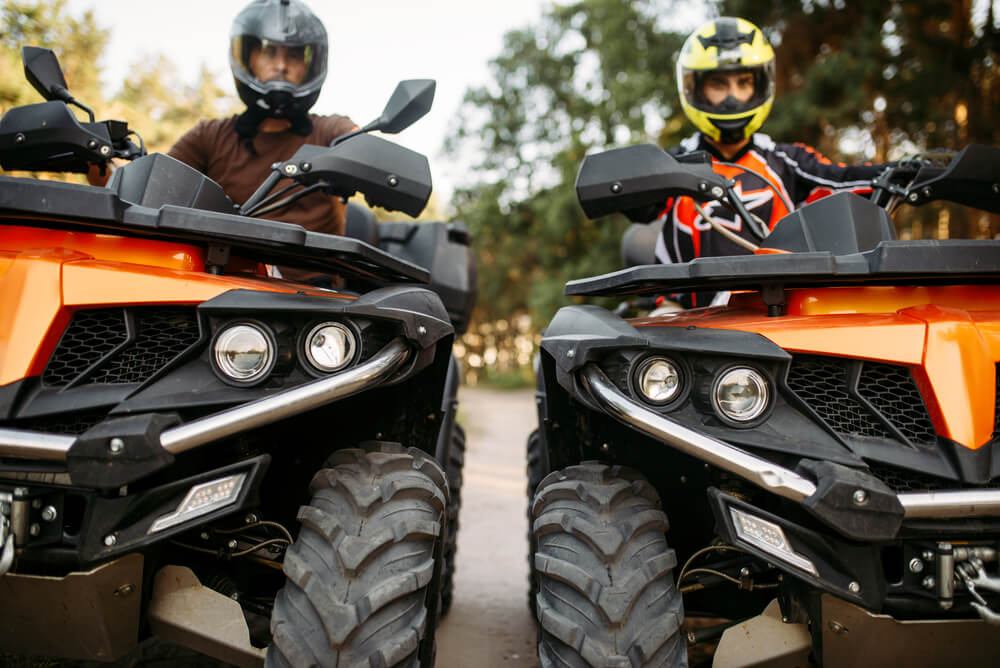
Capabilities and Performance of Military ATVs
As I’ve come to learn, military ATVs truly stand out when it comes to their capabilities and performance. One of the main reasons they’re invaluable to modern military operations is their impressive mobility.
ATVs’ small size and versatility allow them to access various terrains with ease, making them efficient in moving through tight spaces and navigating areas larger vehicles might not be able to reach.
In terms of speed, these vehicles perform exceptionally well. They can swiftly move troops, personnel, and equipment from one location to another, reducing response times and improving the overall efficiency of military missions.
Also, their durability ensures they can withstand harsh environments and challenging conditions, allowing them to be used in various regions with confidence.

Speaking of equipment transportation, the carrying capabilities of military ATVs are certainly noteworthy. They can transport weaponry, supplies, and even injured soldiers swiftly and safely.
It’s evident that these vehicles bring many advantages to the table, enhancing the effectiveness of military operations.
The performance of military ATVs in different terrains is another area where they excel. From muddy trails and sandy deserts to rocky hills and snowy paths, these vehicles can effortlessly traverse diverse landscapes with minimal hindrances.
This attribute allows soldiers to reach their destinations quickly and without delay, providing a significant advantage during tactical missions.
Among their many capabilities, versatility is one that deserves special mention. Military ATVs can be easily modified and adapted to suit various requirements, equipping them with specialized tools, weapons, or reconnaissance systems as needed.
This flexibility makes them ideal for use in various operations, further highlighting their value in modern military strategies.
In the end, the capabilities and performance of military ATVs play a crucial role in enhancing the effectiveness of armed forces around the world.
From their outstanding mobility and speed to their durability and adaptability, these vehicles have proven themselves to be essential assets in today’s challenging defense landscape.
Fuel and Energy Sources for Military ATVs
When I think about military ATVs, fuel and energy sources play a vital role.
Typically, military ATVs use diesel, gasoline, or JP8 as their primary fuel sources. Each of these fuels has its own unique advantages.
Diesel fuel is known to be more energy-dense and provides better fuel efficiency compared to gasoline. This is particularly important for long-range missions where fuel economy is crucial.
On top of that, diesel engines usually require less maintenance, making them an attractive choice for military applications.
Gasoline, on the other hand, offers a higher power-to-weight ratio, which can provide a performance advantage in certain situations. Gasoline-powered ATVs may have better acceleration and top speed, making them suitable for quick-response missions.
Nevertheless, gasoline engines may require more frequent maintenance compared to diesel engines.
JP8 is a type of jet fuel that can also be used in military ATVs. One of the primary advantages of JP8 is its compatibility with various engines, allowing the military to standardize their fuel supply across multiple vehicle types.
This not only simplifies logistics but also reduces the risk of using the wrong fuel in an ATV. Further, JP8 has a lower flammability rate compared to gasoline, which increases safety during combat operations.
In recent years, innovations in military ATV engines have led to the development of the Patriot Engine, which can operate on different fuel types such as diesel, gasoline, JP8, and alternative fuels.
This engine’s flexibility provides the military with increased operational and logistical flexibility while still delivering optimal performance.
In conclusion, the fuel and energy sources for military ATVs play an essential role in their performance, efficiency, and overall capability in the field. Diesel, gasoline, and JP8 are popular choices, each with its own set of advantages and disadvantages.
As engine technology advances, flexibility in fuel options like the Patriot Engine becomes increasingly important, providing our military forces with the equipment necessary to adapt and overcome various challenges.
ATVs in Specific Military Contexts
ATVs in the U.S. Army
I’ve discovered that the U.S. Army has been integrating ATVs into their operations for years. These versatile vehicles serve various purposes on the battlefield, such as transporting supplies, medical evacuations, and being used for reconnaissance missions.
A popular model used by the U.S. Army is the Polaris MV850, which is specifically designed for military use with an increased payload capacity and a more rugged design.
Some advantages of using ATVs in the U.S. Army include:
- Mobility: ATVs can easily navigate through challenging terrains that larger vehicles cannot.
- Versatility: ATVs can be adapted for different purposes, such as carrying weapons or medical equipment.
- Speed: ATVs allow troops to move quickly, which can be crucial in certain missions.
ATVs in Russian Military
In my research, I found that the Russian military also uses ATVs for various purposes. One notable example is the Chaborz M-3 ATV, which is specifically designed for special forces.
It can carry up to six people and is equipped with powerful engines and puncture-resistant tires, ensuring it can handle the harsh Russian terrain.
The Russian military appreciates ATVs for the following reasons:
- Lightweight: The low weight of ATVs allows for easy transport on helicopters or planes.
- Customization: ATVs can be equipped with weapon systems or communication devices tailored to the mission.
- Stealth: ATVs are relatively quiet and can help special forces approach enemy positions without being detected.
ATVs in NATO Forces
ATVs have also found their way into the forces of NATO countries. They are employed for similar tasks, such as logistics support, medical evacuations, and reconnaissance. For instance, the Polaris DAGOR is a popular choice among NATO forces, with its ability to carry up to nine soldiers while providing remarkable off-road mobility.
The benefits of using ATVs in NATO Forces include:
- Interoperability: Many NATO countries use similar ATVs, which can simplify joint operations and maintenance procedures.
- Fuel Efficiency: ATVs generally consume less fuel than larger military vehicles, making them more cost-effective for long-duration missions.
- Adaptability: ATVs can be modified to fulfill specific roles, depending on each NATO country’s requirements and tactical needs.
Other Uses and Challenges for Military ATVs
When I think about the various uses of military ATVs, I can’t help but be impressed by their versatility. One such use is to transport payloads such as ammunition, food, water, and gear to troops on the battlefield.
The larger size and increased towing capacity of military ATVs compared to their civilian counterparts make them well-suited for this task.
On the other hand, there are some challenges that military ATVs face. For instance, they can sometimes struggle to traverse rough or uneven terrain, which can be an obstacle in reaching remote locations on the battlefield.
Furthermore, their size makes them less nimble than smaller vehicles like motorcycles, which can make navigating tight spaces and avoiding enemy fire more difficult.
Another interesting use I’ve seen for military ATVs is to support aircraft operations. They can help transport equipment and personnel, such as ground crew and pilots, around an airfield.
Their speed and off-road capabilities make them particularly useful for this purpose, as they can quickly cover the distance between different aircraft and support facilities.
Moreover, military ATVs can provide valuable assistance in the event of casualties on the battlefield. Their compact size and speed mean they can rapidly reach the injured and evacuate them to safety.
These capable vehicles are sometimes referred to as “mules” due to their ability to carry heavy loads over difficult terrain with relative ease.
However, there is always room for improvement and innovation in the world of military ATVs. Designers and engineers strive to make these vehicles lighter, faster, and more adaptable in order to better serve the various needs of the armed forces.
This constant push for development ensures that military ATVs will remain a critical component of modern warfare, offering essential support and tackling the challenges faced by our troops in the field.
Future Prospects of ATVs in the Military
I believe that the future of ATVs in the military is quite promising. As technology and innovation continue to advance, we will likely see even more functionality and efficiency in these vehicles.
Electric ATVs are one area that shows considerable potential. As the world becomes more environmentally conscious, there’s a push for cleaner energy sources. Electric ATVs can help reduce the military’s carbon footprint while still providing the utility and performance needed in the field.
When it comes to strength, the future of military ATVs will likely focus on improved materials and construction. Lighter, stronger materials can translate into increased payload capacities and better durability for these vehicles.
This can prove beneficial in a variety of military operations, particularly those that require the transport of heavy equipment or supplies.
The flexibility of future ATVs in the military is another exciting aspect. These vehicles can be adapted for different terrains and purposes, making them incredibly versatile tools.
Next-generation ATVs may feature adjustable suspension, modular components, and easily configurable attachments to suit a wide range of missions.
In conclusion, I’m excited by the possibilities that lie ahead for ATVs in the military, as they have the potential to be more electric, stronger, and more flexible to adapt to various needs.
Overall, the future is looking bright for military ATVs, and I can’t wait to see what innovations are on the horizon.
Frequently Asked Questions
How have ATVs evolved in military operations?
In the early days, military ATVs were primarily used for carrying equipment and supplies over rough terrain. Over time, ATVs have evolved to play a crucial role in reconnaissance, security, and special forces missions.
Today, ATVs have advanced features like hybrid systems, better suspension, increased payload capacity, and more robust performance capabilities, making them invaluable to military operations.
What are the benefits of using ATVs in the military?
ATVs offer many benefits to the military, including their ability to navigate challenging terrain with ease, speed, and agility. They provide excellent mobility in off-road conditions, allowing troops to quickly access locations that may be difficult for larger vehicles.
Their versatility allows them to be customized for a range of missions, from carrying heavy loads to serving as mobile command posts or medical evacuation platforms.
Which manufacturers produce military-grade ATVs?
Several manufacturers produce military-grade ATVs, including Polaris, John Deere, Can-Am, and Honda. These companies work closely with military organizations to ensure their vehicles meet rigorous standards for durability, performance, and reliability.
What are some notable military UTV models?
Some notable military UTV models include the Polaris MRZR, John Deere M-Gator A1, Can-Am Outlander, and Honda Pioneer 1000. Each of these vehicles has unique features tailored to military operations, such as advanced suspension systems, increased payload capacity, and specialized accessories for carrying weapons or other equipment.
How does the Polaris DAGOR improve military mobility?
The Polaris DAGOR (Deployable Advance Ground Off-Road) vehicle enhances military mobility by offering exceptional off-road capabilities, impressive payload capacity, and a modular design that allows for various mission configurations.
With its speed, maneuverability, and adaptability, the DAGOR significantly improves tactical effectiveness in a variety of situations.
Are there any autonomous military UTV systems?
Yes, there are autonomous military UTV systems in the development and testing phases. One example is the Polaris RZR X, an autonomous ATV designed for reconnaissance and surveillance missions.
These vehicles use advanced sensors, GPS, and artificial intelligence to navigate and operate in challenging environments without human intervention, enabling safer and more efficient military operations.














